Prepare Your Evacuation and Communication Plan
There may be emergency conditions in the future in which you will decide to get away from your home or neighborhood or city; or there may be situations when you are ordered by the government to leave. Follow the below guidelines for being prepared to evacuate your home or town:
|
 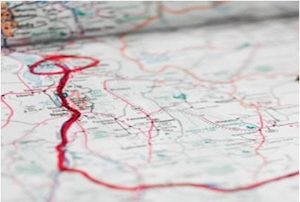 You need to determine in advance places to where your family will evacuate or meet up, both within your immediate neighborhood and outside of your town. You need to determine in advance places to where your family will evacuate or meet up, both within your immediate neighborhood and outside of your town.
Here is a evacuation planning worksheet that you can use to decide (before a disaster) where will be your meet-up locations should a disaster occur.
|
Keep Your Car Ready To Help You Evacuate
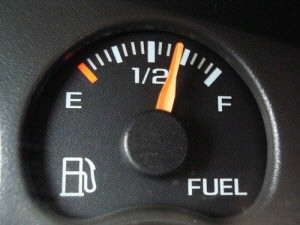 If you have a car, keep a half tank of gas in it always. If you have a car, keep a half tank of gas in it always.- If an evacuation from your town becomes likely, from that point on, keep a full tank of gas in your car.
- Gas stations may be closed during emergencies and unable to pump gas during electrical outages. If you do not have a car, plan how you will leave town, such as with family and friends, or via bicycle or on foot.
- Become familiar with alternate routes and other means of transportation out of your area, such as walking or bicycles (since exit roads can quickly become unusable). Choose several destinations in different directions so you have options in an emergency.
|
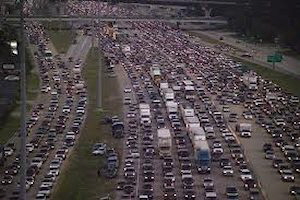  Be An Early Evacuator Be An Early Evacuator
If there is the possibility that evacuation may become necessary, GO early — because once exit roads become jammed, it will be difficult or impossible to evacuate. Being stuck on a freeway can quickly change a situation from INCONVENIENT (hungry, thirsty and no sanitation) to LIFE-THREATENING (because of severe temperature and lack of water and food for several days or more.
|
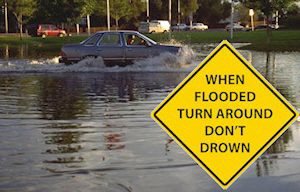 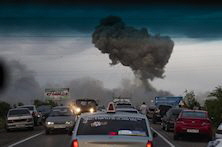 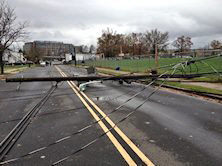 Be alert for road hazards Be alert for road hazards
such as washed-out roads or bridges, fires and downed power lines. Do not drive into flooded areas... be ready to use alternative routes.
|
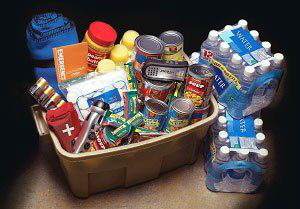   Grab Your 72 Hour Kit and Other Emergency Supplies Grab Your 72 Hour Kit and Other Emergency Supplies
Take your emergency supply kit. It's not a bad idea to keep your car stocked and ready to go at a moment's notice.
|
Tune Into Emergency Broadcasts - Stay Abreast of What's Happening
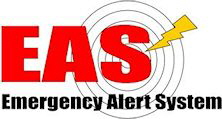 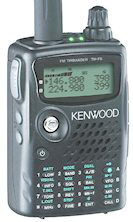 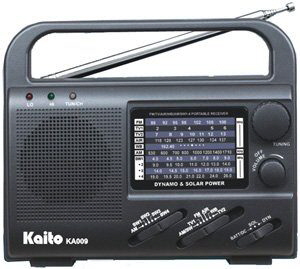 Listen to a battery-powered radio and follow local evacuation instructions. Radios that require electrical connections may be useless. Ham radios give you the most probability of being able to communicate with family and friends during emergencies. So, consider becoming licensed and acquiring a portable ham radio. Listen to a battery-powered radio and follow local evacuation instructions. Radios that require electrical connections may be useless. Ham radios give you the most probability of being able to communicate with family and friends during emergencies. So, consider becoming licensed and acquiring a portable ham radio.
|
If time allows, here are some other important things to do when evacuating:
- You can plan to take your pets with you, but understand that only service animals may be permitted in public shelters. Plan how you will care for your pets in an emergency.
- Call or email the out-of-state contact in your family communications plan. Tell them where you are going.
- Wear sturdy shoes and clothing that provides some protection such as long pants, long-sleeved shirts and a cap.
- Unplug electrical equipment such as radios, televisions and small appliances. Leave freezers and refrigerators plugged in unless there is a risk of flooding. If there is damage to your home and you are instructed to do so, shut off water, gas and electricity before leaving. Otherwise, don't shut of gas (as it may take a long time to get it back on).
- Secure your home by closing and locking doors and windows.
- Leave a note (use your emergency signaling kit) telling others when you left and where you are going.
- Check with neighbors who may need a ride.
|